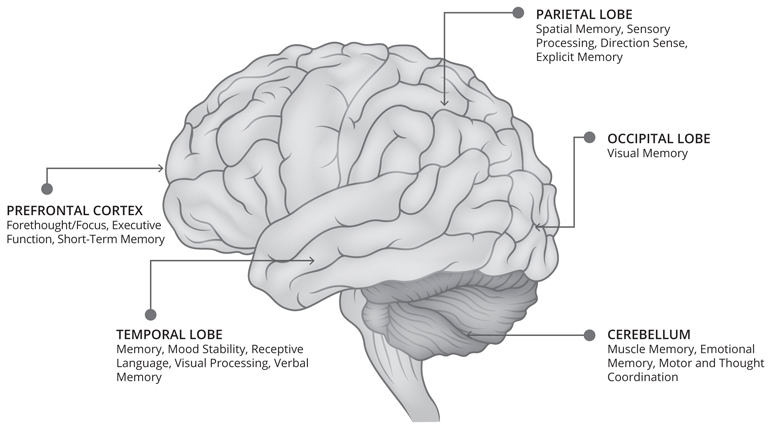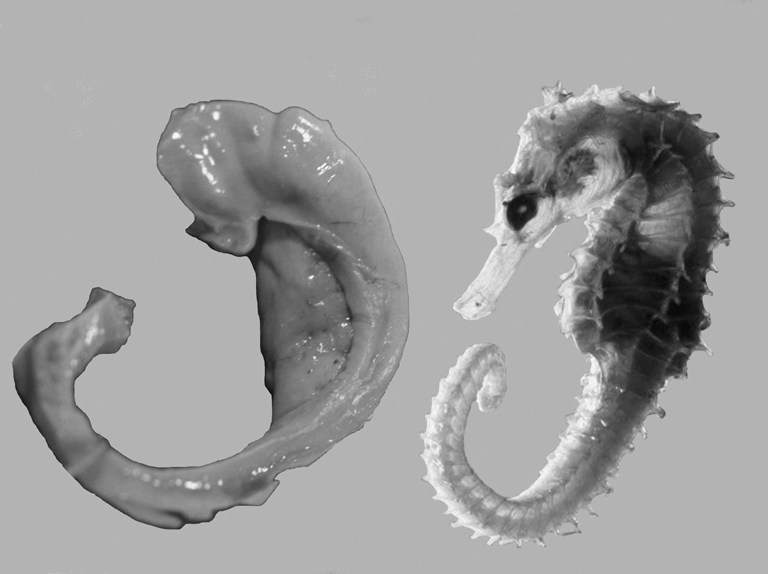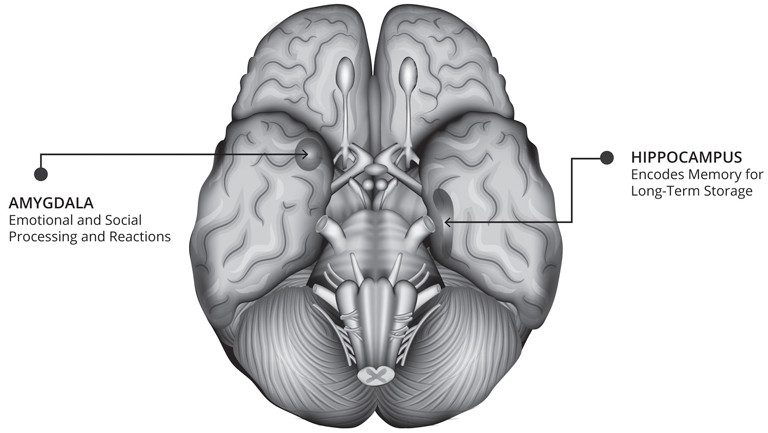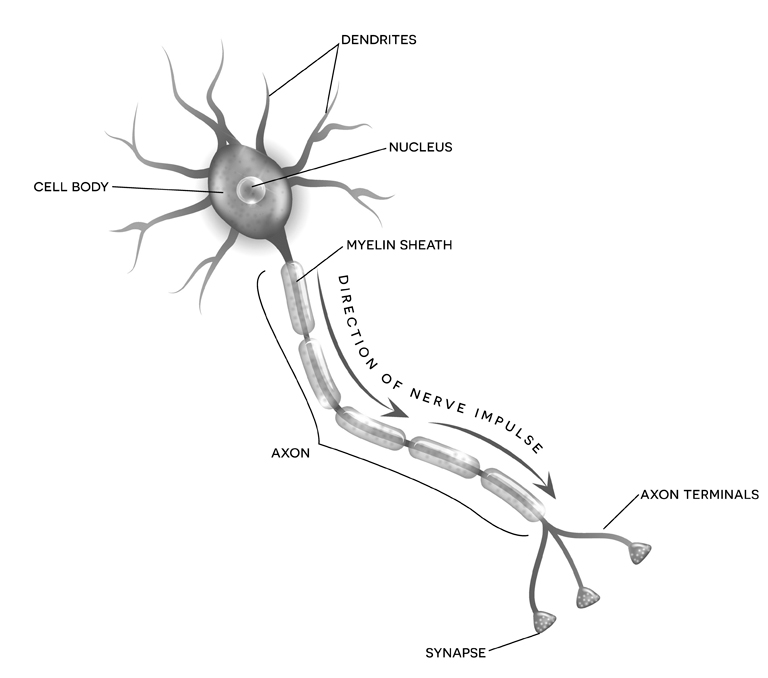CHAPTER 2
HOW THE BRAIN WORKS
LEARN ABOUT THE MOST IMPORTANT PART OF YOU
A woman’s pastor saw her in the grocery store and asked her why she hadn’t been to church lately. “Aren’t you concerned about the hereafter?” he asked.
“I’m concerned every day,” she replied. “I go into the kitchen or the bedroom and am constantly asking myself what am I hereafter?”
ATTRIBUTED TO REVEREND CHARLES ARA
When we consider uncomfortable topics like death or dementia, human nature often leads us to joke about them, just as Reverend Ara did. Humor gives us a measure of control, particularly when we haven’t been affected personally by something.
Yet if you have trouble remembering things, memory loss is no laughing matter. For the last decade, I’ve been a consultant to FranklinCovey, the business consulting giant founded by Dr. Stephen Covey. One of the first people I met at the company was Todd, their “chief people officer.” He was recording a conversation with me for one of their productivity programs. Todd started the interview by telling me he was 53 and his memory was terrible.
“I often have no idea where I put my keys and sometimes find them in the refrigerator, next to the eggs.” He quickly chalked it up to his age.
“It is definitely not normal,” I told him, pointing out that though I was older than he was, my memory was as sharp as ever. “It is one of the little lies people tell themselves to justify their memory problems and bad habits. The denial prevents them from getting the help they need. Tell me about your diet and exercise.”
Todd’s face brightened as he explained that he worked out five times a week. “I run long distances and am in great shape,” he added.
Todd looked uncomfortable. “It’s not so great,” he said. “I usually have a Diet Coke and Pop-Tarts on the way to work. The rest of the day doesn’t get much better.”
We’d hit on one key source of Todd’s memory troubles. A luxury car running on cheap fuel doesn’t perform well, regardless of how much time and money an owner spends on its frame. Likewise, no matter how much Todd exercised, his brain was suffering because of the cheap fuel he was putting into his body.
I told Todd, “It’s time to begin treating yourself as someone special rather than abusing your body.” During the rest of our interview, I pointed out several ways he could better care for his brain.
When we talked again three months later, Todd told me he had fallen in love with his brain and was taking much better care of it. His memory had also significantly improved.
Smiling, he said, “You now haunt me at every meal.”
I hope I can convince you to love your brain too. Perhaps the best way to do that is to help you understand just how complex and powerful it is —and appreciate the many parts of your brain that are involved in creating and retaining memory.
Fall in love with your brain. It runs everything in your life. |
Of course, your brain does far more than that. It runs your life and makes you who you are, producing your thoughts, feelings, plans, and behavior. It’s the organ that enables you to learn, love, and work and it is at the center of every decision you make. A healthy brain leads to better decision making, which in turn leads to better relationships, job performance, finances, physical health, and overall happiness. Even though your brain makes up only about 2 percent of your body’s weight (about three pounds), it uses 20 to 30 percent of the calories you take in, as well as 20 percent or more of the oxygen and blood flow in your body. The brain uses its approximately 86 billion neurons, which fire 18 trillion times a second,[12] to perceive and analyze incoming data; decide what, if anything, to do about it; and then execute your responses.
To understand how to strengthen your memory, it’s important to understand how a healthy brain works and the role each of the four regions plays in the creation, storage, and retrieval of memories. Get ready for a fascinating insider’s tour of the brain. My goal as your guide is that you come away from this chapter with a sense of wonder and awe and a better grasp of why it’s so important to love and care for your brain. You get only one in life, and medical science sees no prospects for transplants for the foreseeable future. Taking care of your unique brain will contribute to your living a happier, healthier, more memorable life.
A GRAND TOUR OF THE BRAIN
The brain is divided into four main regions or lobes: frontal, temporal, parietal, and occipital. Generally speaking, the back half (the parietal and occipital lobes and the back part of the temporal lobe) perceives one’s surroundings. The front half integrates what the body’s senses take in and then analyzes that information before planning and carrying out decisions. The cerebellum lies behind the brain stem at the back and bottom of the brain.
The brain’s CEO: frontal lobes and prefrontal cortex
The frontal lobes (the front half of the brain) are divided into three sections: the motor cortex, which controls the body’s motor movements (such as jumping, chewing, and wiggling your fingers); the premotor area, which is involved in planning those movements; and the prefrontal cortex (PFC), which directs executive functions like forethought, judgment, and impulse control. Short-term and working memories are first processed in the PFC as well.
OUTSIDE VIEW OF THE BRAIN

The prefrontal cortex is responsible for the success of the human species. It enables us to learn from our mistakes and make plans. When the PFC is healthy, we behave consistently in ways that enable us to reach our goals. When it works as intended, we are organized, goal directed, thoughtful, empathetic, and able to express feelings appropriately. The PFC is often called the executive part of the brain and is closely associated with judgment, impulse control, attention span, self-monitoring, problem solving, and critical thinking. The prefrontal cortex is the brain’s brake. It stops us from saying or doing stupid things.
I was once at a conference with a 42-year-old friend I’ll call Joelle. She had been in a car accident that damaged her PFC a few years earlier. As we sat waiting for the next presentation, we overheard two women in the row in front of us talking about why they were heavy. One said to the other, “I don’t know why I’m overweight; I just eat like a bird.”
In a voice loud enough for everyone around us to hear, my friend said, “Yeah, like a condor.”
Horrified, I gave Joelle a look that asked, Why would you say that out loud? Meanwhile the embarrassed and angry women moved away from us. Joelle put her hand over her mouth and said, “Oh no, did that get out?”
Not surprisingly, when the PFC isn’t working as it should, problems such as impulsivity, distractibility, disorganization, faulty decision making, poor time management, and lack of empathy are evident. When such issues have been present someone’s whole life, a developmental disorder such as attention deficit disorder (ADD), also known as attention deficit hyperactivity disorder (ADHD), might be to blame. Or if problems emerge early in life, they could be the result of a head injury, such as Joelle’s. When developed later in life, they could be part of accelerated aging or a dementia-like process, such as frontotemporal lobe dementia or Alzheimer’s disease in its later stages. If, say, Grandpa was a moral person his whole life but gradually began swearing more and doing unseemly things, such as making crude jokes or touching others inappropriately, it’s likely a sign that his PFC is deteriorating.
Carl, 74, came to see us for depression, irritability, fatigue, and low motivation. His wife saw indications of short-term memory deficits, and he had more trouble making decisions. After grinding through a long series of failed therapies for years, his neurologist finally diagnosed him with Alzheimer’s disease. Carl had nearly given up hope when he first considered seeing Brad Johnson, MD, at Amen Clinics outside of San Francisco. His insurance psychiatrist did not feel the need to do any imaging and discouraged him from coming to see us. When we scanned Carl’s brain, we discovered a large benign tumor in his prefrontal cortex, crushing his brain. When it was removed, his depression and cognitive function dramatically improved.
CARL’S BRAIN SPECT SCAN

Severe deficit in prefrontal cortex
The social secretary: temporal lobes
The temporal lobes are located underneath your temples and behind your eyes. They are involved with encoding memories into long-term storage, as well as mood stability, receptive language (reading and hearing), the reading of social cues, and spiritual experience. The temporal lobes also house the “what pathway” in the brain, which helps you recognize objects by sight and name them. You can tell “what” they are.
A pair of thumb-sized structures on the inside of the temporal lobes are critical to our ability to learn and remember. Due to their shape, each is called the hippocampus, meaning “seahorse” in Greek. These are very special brain structures, because they house stem cells that can help produce new hippocampal cells under the right circumstances.[13] New research suggests we can produce up to 700 new cells a day if we provide them with a nourishing environment, which includes exercise (for better intake of oxygen and increased blood flow), proper nutrition, omega-3 fatty acids, and stimulation through mental exercise and social interactions.[14]
HIPPOCAMPUS COMPARED TO A SEAHORSE

Our hippocampi (plural for hippocampus) encode new information and can store it for several weeks. If the information is reinforced, we keep it longer. In the movie 50 First Dates, Lucy, Drew Barrymore’s character, is in a severe car accident that damages her hippocampi. As a result, every evening when she falls asleep, memories of the prior day are wiped out. Although such a scenario is rare, it is possible. Each of the BRIGHT MINDS risk factors can also damage your hippocampi, making them smaller and weaker. Memory Rescue will give you many strategies to make them bigger and stronger.
The hippocampi are the star brain structures of your memory and this book. Without them you cannot store new information or experiences. Protect them at all costs. |
UNDERSIDE OF THE BRAIN: THE AMYGDALA AND HIPPOCAMPUS IN TEMPORAL LOBES

In front of the hippocampus lies a critically important structure called the amygdala (derived from the Greek word for “almond” for its shape), which, as part of the brain’s limbic system, coordinates emotional responses to what is happening around you. (Just as you have two hippocampi, you have a pair of amygdalae.) Strong emotions strengthen memory. Remember your first kiss? If you are older than 60, you likely remember where you were when President John F. Kennedy was shot in 1963 (I was in the third grade at Our Lady of Grace School, where I remember the nuns starting to cry at the news) or when the space shuttle Challenger exploded in 1986 (I was driving on the Likelike Highway on Oahu, where I was doing my child and adolescent psychiatry fellowship). And most Americans can recall what they were doing when the World Trade Center fell on 9/11 (I had just woken up at home in Newport Beach and turned on the television).
Emotional encoding of memories allows you to remember harrowing events, such as trauma, so that you can avoid them in the future, or awe-inspiring experiences, so that you can repeat them. In emphasizing the storage of certain experiences over others, the amygdala enables you to respond appropriately and rapidly in future situations; distancing yourself from someone lurking in a public stairway, for instance, could save your life. When the amygdala is operating correctly, your reactions to the world are logical. If your amygdala is overactive, you may overreact to events around you. If it is underactive, you may be unable to read situations accurately, and your response may be inappropriate. A good example: If you laugh when your boss tells you his mother died, your amygdala is underperforming.
Trouble in the temporal lobes can lead to both short- and long-term memory problems, along with reading difficulties, an inability to find the right words in conversation, trouble reading social cues, and mood instability. The temporal lobes, especially on the left side, have been associated with dark thoughts and temper problems.
The navigator: parietal lobes
The parietal lobes —the top, back part of the brain —are involved with important aspects of visual processing, such as seeing motion and tracking objects like a kite or a football in the air. They are involved with your sense of direction, as well as your ability to know right from left and to read and create maps in your mind. They are called the “where pathway” because they help us know where things are in space. Because they are involved in spatial awareness, when the parietal lobes are damaged, people tend to get lost, have trouble catching balls, or park cars at odd angles. The right parietal lobe perceives information from the left side of the body, while the left parietal lobe senses input from the right side. Additionally, these lobes help you understand what you read, perform basic symbolic operations involved in math (adding, subtracting, etc.), and rotate objects in your mind.
The parietal lobes are one of the first areas damaged in Alzheimer’s disease. Because these lobes are heavily involved with directional sense, people with AD have trouble with navigation and driving, often getting lost. Because they may also have difficulty sensing their position or tracking objects visually, they may drop dishes, find parking a car difficult, or become confused when trying to put objects together (such as assembling an artificial Christmas tree). They also may experience trouble dressing, doing math, or writing; confuse their left and right; and have impaired copying, drawing, or cutting skills. Another symptom of impaired parietal lobes is denying these problems, so those affected may not even recognize the serious issues they may have with directions, driving, or communicating.
Be careful with your GPS. It may give you a false sense of “memory” security. |

Why Is Alzheimer’s Disease Being Diagnosed Later?

The seer: occipital lobes
The occipital lobes, located at the back of the brain, process visual information. Light enters the retinas, each of which sends signals to the occipital lobe on the opposite side. Light, shade, color, and basic shapes are sorted out in the occipital lobes. When these lobes are damaged, sight and perception are often affected. Visual hallucinations, illusions, or blindness sometimes occur. When one side of the occipital lobe isn’t working, you can’t see the opposite side of your environment. That means if the left lobe is malfunctioning, you can’t see objects to your right. A type of dementia called Lewy body dementia (LBD), associated with Parkinson’s disease, often begins with symptoms of occipital lobe damage, such as visual hallucinations.
The coordinator: cerebellum
The cerebellum, Latin for “little brain,” is located behind the brain stem at the base of the brain and helps control physical coordination, as well as the precision of movement and timing. It also plays a role in the speed of thought, speech, and physical movement. Damage to the cerebellum can lead to slowed thinking, speaking, and moving.
New research shows that the cerebellum may also be involved with higher-level thinking, including attention, learning, working memory, language, judgment, and “thought” coordination, or our ability to integrate new information. The left side of the cerebellum plays a role with right-hemisphere tasks in the brain, such as seeing the big picture and reading social cues, while the right cerebellum assists with left-hemisphere tasks, such as language. Damage to one side of the frontal or temporal lobes tends to turn off the cerebellum on the opposite side, a condition called crossed cerebellar diaschisis. Coordination exercises, such as dance, tennis, table tennis, and tai chi, can strengthen this part of the brain.
BRAIN REGIONS: HOW THEY WORK, WHAT CAN GO HAYWIRE
BRAIN SYSTEM |
FUNCTIONS |
PROBLEMS |
Prefrontal Cortex |
Focus Forethought Judgment Impulse control Organization Planning Empathy Learning from mistakes |
Short attention span Acting without thinking Poor judgment Impulse control problems Disorganization Lack of planning Lack of empathy Trouble learning from experience |
Temporal Lobes |
Hearing/listening Reading Interpreting social cues, including tone of voice Short- and long-term memory Recognizing objects by sight Mood stability Naming things |
Mishears communication Dyslexia Socially inappropriate behavior Trouble reading social cues Memory problems Word-finding problems Poor visual recognition Mood instability Abnormal sensory perceptions Anger, irritability, dark thoughts |
Parietal Lobes |
Sense of direction Sensory perception Spatial processing Seeing motion Visual guidance, such as to grab objects Recognizing objects by touch Ability to know where you are in space Knowing right from left Reading and creating maps |
Impaired sense of direction Trouble dressing or assembling objects Left-right confusion Denial of problems or illness Impaired position sense Difficulty with math or writing Neglect or unawareness of what one sees Problems copying, drawing, or cutting |
Occipital Lobes |
Vision Color perception Depth perception |
Deficits in vision Deficits in perception Visual hallucination Visual illusions Functional blindness |
Cerebellum |
Motor coordination Thought coordination Impulse control Organization Speed of thought (like clock speed of computer) |
Coordination problems Slowed walking Slowed thinking Slowed speech Disorganization Impulsiveness Poor learning |
HOW THE BRAIN’S NEURONS TALK TO ONE ANOTHER
How does each region of the brain communicate with the others? Like every organ, the brain has its own set of specialized cells. Its primary working cell is the neuron, and there are roughly 86 billion of them in the brain. A neuron is similar in structure to other cells in the body, except it has two kinds of extensions (see “Healthy Brain Neuron” below). Dendrites, which look like bushes or tree branches, receive information from other brain cells, while the axon —a single, taillike extension —sends information to other neurons. Dendrites and axons can grow and be modified throughout life, depending on our experiences and the environment in which we live.
HEALTHY BRAIN NEURON

Neurons make up the brain’s electrical information highway network. Their main job is to generate electrical signals to stimulate other neurons, like tiny lightning bolts traveling down axons at speeds as fast as 250 miles per hour. When an electrical signal reaches the end of the axon, it stimulates the release of neurotransmitters, or chemical messengers, into the synapse, or space between neurons, to excite or calm nearby neurons. Glutamate, the primary “excitatory” neurotransmitter, is released by 75 percent of all neurons in the brain. About 20 percent of neurons release GABA (gamma-aminobutyric acid), the primary “calming” neurotransmitter, which helps control anxiety. Other neurotransmitters include serotonin, which helps us feel happy and worry-free; dopamine, which improves motivation and focus; and acetylcholine, which helps us learn and remember. When enough neurons are stimulated, they create a network effect to perform specific brain functions, such as walking or thinking.
Each neuron is connected to as many as 1,000 other neurons. Scientists estimate that they exchange signals via about 100 trillion synaptic connections. Clearly the brain’s storage capacity is vast, but it’s nearly impossible to calculate exactly how many memories and pieces of information the human brain can hold.
HOW MEMORIES ARE MADE
Though the biology of memory is complex, the more you know about it, the better you’ll understand how you can improve it. There are three main stages involved in memory: encoding, storage, and recall. Your senses —taste, sight, touch, smell, and hearing —linked with emotion are the raw ingredients for making memories. Your brain processes your experiences to form memories, whether it be through consciously focusing on something (like studying) or subconsciously creating associations (like attaching emotional significance to new information —think of your first day of school). With each new experience, your brain forms new connections and slightly rewires itself —an ability known as neuroplasticity.
Encoding is the first step to creating a memory. It occurs when your brain attaches meaning to experiences or determines why something happened. Studies show that we remember things better and retain them longer when we associate them with a purpose.
Storage is the next step in memory. Research suggests that the brain doesn’t store memories in complete, exact recollections that it can simply retrieve. Rather, memories are stored in small bits scattered in different areas of the brain. The hippocampus is a critical gateway to long-term storage for memories. If the hippocampus is damaged, you may not be able to recall what happened yesterday.
Recall is how your brain retrieves a memory. During recall, your brain reconstructs the memory from the smaller stored pieces. When you remember something, it’s not an exact “replay” of the experience. It’s more like a creative reimagining, such as when you “remember” catching a 10-foot catfish last summer. That’s why memories can change over time. When your brain recalls a memory, it stimulates nerve pathways that were created when the memory was formed. Repeatedly working your memory strengthens it over time.
Forming memories requires an intricate dance between cell membranes and the chemicals inside and outside of cells, especially glutamate and acetylcholine. As we age, glutamate tends to go up, which can overstimulate and be toxic for cells, while acetylcholine tends to go down, which is one reason memory suffers.
Variations of memory
The two tables below describe the different types of memory, how long they last, and the areas of the brain with which they are associated. Which ones are giving you trouble?
MEMORY DECODED
TYPE OF MEMORY |
HOW LONG IT LASTS |
ASSOCIATED BRAIN AREA |
Sensory |
< 1 second (most lost, since not encoded) |
Visual-sensory cortex (parietal/occipital) |
Short-term |
< 60 seconds (such as a phone number) |
Prefrontal cortex |
Working |
Seconds to hours (cramming for an exam) |
Prefrontal cortex |
Long-term |
Hours to months |
Hippocampus —the “gateway” brain structure. Long-term memories pass through the hippocampus and are then stored all over the brain: visual cues are stored in occipital lobes, sensory cues in parietal lobes, sounds in temporal lobes, etc. |
Long-lasting |
Months to a lifetime |
Hippocampus, then all over the brain |
LONG-TERM MEMORY
TYPES OF LONG-TERM OR LONG-LASTING MEMORIES |
DESCRIPTION |
Explicit |
Conscious |
Declarative |
Facts and knowledge |
Episodic |
Life events and experiences |
Semantic |
Meaning of things (words, ideas, concepts) |
Flashbulb |
Emotionally charged |
Implicit |
Unconscious |
Muscle |
Automatic movements (riding a bike, swimming) |
Emotional |
Unconscious emotional reactions |
Verbal |
Words and abstractions of language |
Spatial |
Navigating space |
Visual |
How the world looks |
Associative |
Relationships between unrelated items, such as a person’s name and the aroma of her perfume |
BIRTH, AND DEATH, OF BRAIN CELLS
Neurogenesis is the word for the birth of new brain cells, but the birth cycle begins with death. Let’s say someone goes to a New Year’s Eve party and has a little too much champagne. He comes home and sleeps it off. By the time he wakes, several hundred thousand neurons may have died from alcohol toxicity. His brain will try to replenish its stores of neurons. The act of neurons dying triggers certain growth factors, such as the release of BDNF (brain-derived neurotrophic factor), to stimulate the growth of new neurons. But too many toxins over time can overpower neurogenesis. As a result, more cells die than are made, and the brain begins to shrink or atrophy.
Fortunately, you are not powerless to stop your brain from shrinking. In upcoming chapters, I will provide dozens of recommendations, from dietary changes to exercise options to beneficial supplements and more, designed to increase your brain’s neurogenesis. If you love your brain, you can fight back to make it healthier and improve your memory.
- Fall in love with your brain. It’s the most important part of you.
- The prefrontal cortex is the brain’s brake. It stops you from saying or doing stupid things. Protect it.
- Your hippocampus is the gateway brain structure for memory.
- Emotion anchors memory.
